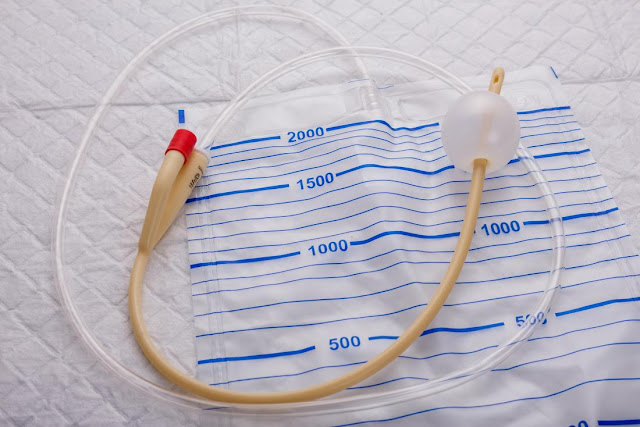Urinary Catheters Market Is Estimated To Witness High Growth Owing To Increasing Prevalence Of Urinary Incontinence
Market Overview:
Urinary catheters are medical devices used to collect urine from the bladder when normal urination is not possible. The market for urinary catheters is driven by the increasing prevalence of urinary incontinence, especially among the elderly population. The growing geriatric population, rising incidences of chronic kidney diseases, and the increasing demand for minimally invasive procedures are also contributing to the market growth. Urinary catheters offer advantages such as improved patient comfort, easy insertion and removal, and reduced risk of infection. These products are essential for patients with urinary retention, urinary incontinence, and those undergoing surgeries or medical procedures that require bladder drainage.
The global Urinary Catheters Market Size is estimated to be valued at US$5,293.6 million in 2022 and is expected to exhibit a CAGR of 5.6% over the forecast period 2022-2030, as highlighted in a new report published by Coherent Market Insights.
Market Key Trends:
The key trend driving the urinary catheters market is the increasing adoption of advanced materials and technology in catheter manufacturing. Manufacturers are focusing on developing catheters using high-quality materials that provide better patient comfort and reduce the risk of infection. For instance, silicone-based catheters are becoming popular as they offer superior biocompatibility and flexibility. Additionally, there is a growing preference for antimicrobial-coated catheters that help prevent urinary tract infections. Other trends in the market include the development of intermittent catheters for intermittent self-catheterization and the rise in the availability of specialty catheters for specific patient populations. The market is also witnessing the introduction of innovative catheter designs that enhance ease of use and patient compliance.
Key players in the urinary catheters market include B. Braun SE, Coloplast Group, BD, Cathetrix, Hollister Incorporated, Boston Scientific Corporation, Medtronic
PEST Analysis:
Political: The political factors affecting the urinary catheters market include government regulations and policies related to healthcare and medical devices. These regulations may impact the manufacturing, sale, and distribution of urinary catheters, as well as reimbursement policies for medical procedures involving these devices.
Economic: Economic factors that influence the market include overall economic growth, healthcare expenditure, and reimbursement policies. The market is expected to witness high growth due to increasing healthcare expenditure and reimbursement facilities for urinary catheter procedures.
Social: Social factors such as increasing geriatric population, rising prevalence of urinary incontinence, and growing awareness about the importance of urinary catheters are driving the market. The demand for urinary catheters is also fueled by lifestyle changes, sedentary habits, and increasing cases of chronic diseases.
Technological: Technological advancements play a crucial role in the urinary catheters market. The development of innovative catheter materials, coatings, and designs improves patient outcomes and comfort. Additionally, the integration of digital technologies in urinary catheters, such as smart catheters, enhances monitoring and management of urinary conditions.
Key Takeaways:
The global urinary catheters market is expected to witness high growth, exhibiting a CAGR of 5.6% over the forecast period from 2022 to 2030. This growth can be attributed to several factors, including the increasing geriatric population, rising prevalence of urinary incontinence, and growing awareness about urinary catheters.
In terms of regional analysis, North America is expected to be the fastest-growing and dominating region in the urinary catheters market. This can be attributed to factors such as the presence of a well-established healthcare infrastructure, higher healthcare expenditure, and favorable reimbursement policies. The region also has a high prevalence of urinary conditions and a large geriatric population, driving the demand for urinary catheters.
Key players operating in the urinary catheters market include B. Braun SE, Coloplast Group, BD, Cathetrix, Hollister Incorporated, Boston Scientific Corporation, Medtronic, Bactiguard AB, Amecath, Urocare Products, Inc., Rocamed, Cook, Ribbel International Limited, Otsuka Pharmaceutical Factory, Inc., Sonoma Pharmaceuticals, Inc., Affera, Inc., HR Pharmaceuticals, Inc., Potrero Medical, Ingenion Medical, and The Flume Catheter Company Ltd. These key players have a strong presence in the market and are involved in strategies such as acquisitions, collaborations, and product launches to maintain their market position and expand their customer base.




Comments
Post a Comment